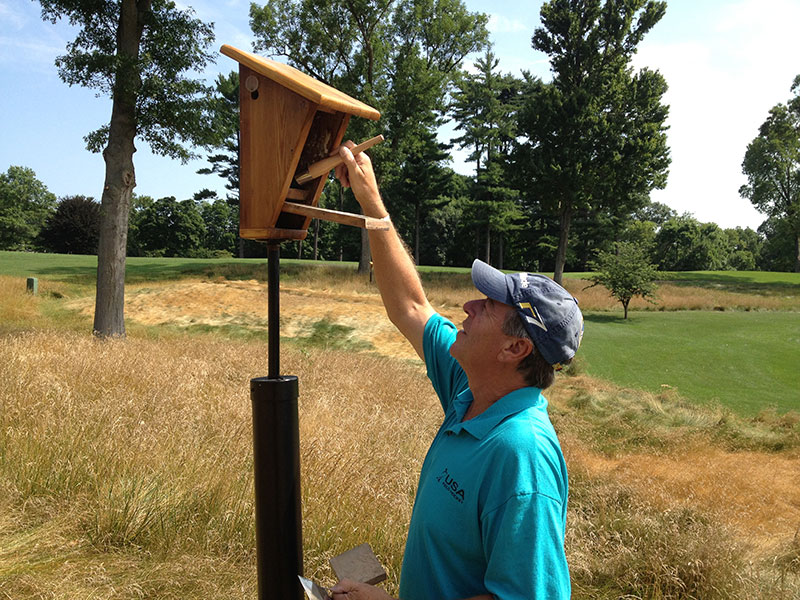Design
1. Use only ‘approved’ nest boxes with front, side or top opening, so that nests can be safely monitored throughout the nest cycle.
2. To regulate temperatures in nest boxes, ensure that your box has 1/4 to 1/2″ wide ventilation slots at the top.
3. To attract desireable occupants, use boxes with appropriately sized entrance holes. Make sure the integrity of the hole size stays the same.
4. In areas with predator problems, attach Noel Predator Guards to nest box entrances and/or baffles on the pole; both of these will protect nesting birds.
Placement
1. To attract Eastern Bluebirds or Tree Swallows, place nest box in open habitat; face box entrance away from prevailing wind and rain.
2. Keep all nest boxes at least 100 yards away from cattle feed stations, feed lots and bird feeders to reduce House Sparrow competition and predation.
3. Keep cats indoors and feed birds only safflower and sunflower seeds, not millet or cracked corn.
4. Be aware of competition between species for boxes; as this can reduce nesting success; House Wrens, Tree Swallows, House Sparrows and Bluebirds ALL like the same type of cavity nest box.
5. Do not place boxes in areas where there will be disturbances, such as construction, brush clearing or spraying of insecticides.
Monitoring
1. Join a state, local or national nest box monitoring program, like Cornell Birdhouse Network.
2. Keep track of nesting activity by monitoring your boxes on a weekly basis throughout the breeding season (March – August)
3. Before opening to check box contents, tap box gently to alert adult birds inside. They will likely flush (leave the nest), allowing you to observe eggs and or chicks, but will return soon as you leave the area.
4. Be sure to protect box opening to prevent chicks from leaving their nest prematurely. Hold your hand over nest to keep them back.
5. Open box slowly and quietly, and only long enough so that you can see in to count eggs and/or chicks, then close box securely.
6. “Practice adaptive management of your nest boxes” by using your monitoring data to make wise choices. For example, if predation occurs frequently at a box, move it or modify it with a Noel Guard or a Ron Kingston stovepipe baffle. If a certain box never attracts a pair of Bluebirds, move it to a new location.
A wide variety of songbirds, woodpeckers, owls and waterfowl depend on cavities (holes) in trees for their nesting sites: in the absence of natural cavities, nest boxes can provide valuable alternatives.
Today, nest boxes are permanent fixtures in millions of backyards. Moreover, farms, ranches and vineyards use nest boxes to attract insect and rodent-eating birds to their lands. Nest boxes require regular maintenance and supervision. By following the guidelines suggested above, you can be the best nest box landlord possible and keep your nest box safe for songbirds, raptors and other cavity nesting waterfowl.

